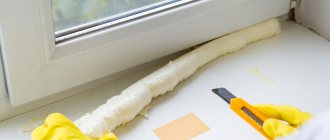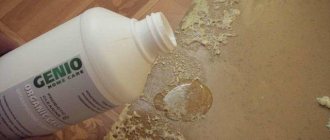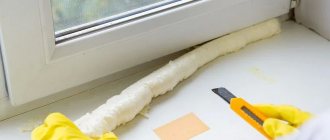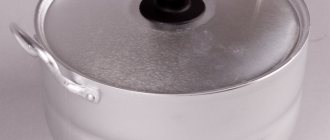Answering the question - how to clean dried polyurethane foam, it is necessary to find out its chemical composition, determine which solutions can remove such contaminants without leaving a trace. There are many special liquids that will help effectively remove hardened foam from wooden, metal, and plastic surfaces. But what to do when the product gets on your hands, body or face? This building material consists of polyurethane foam, has a high degree of adhesion and strong adhesive properties. This is why it is so difficult to clean from various surfaces. But this needs to be done! How can you wash polyurethane foam from wooden products?
When the foam gets in the wrong place...
In such cases, acetone comes in handy; it dissolves liquid foam right before your eyes. But he will serve as an assistant until the composition dries out. And then only mechanical or chemical means will be required.
- Use a metal brush, scraper or knife. Hard pieces of building material are first carefully cut off and then rubbed down with sandpaper.
- Special cleaners for hardened foam: “Platina Cleaner”, “Russian Professional”, “Purex”, “PENO-OFF”, “HOBBY”.
Methods of using such products.
The can is shaken and sprayed onto the contaminated areas; after ten minutes, the remaining foam is removed mechanically, and the surface is wiped with a cotton rag.
Attention:
you need to monitor the area where the cleaning solution hits, otherwise you can remove paint, varnish, and other protective materials along with the foam. Spraying the can near a fire is strictly prohibited!
You can completely abandon chemicals and try to wash dried foam with folk remedies.
The drug "Dimexide" removes traces of construction foam
Dimethyl sulfoxide can be purchased at any pharmacy at a nominal price without a doctor's permission. You need to work with it carefully, the product is absorbed into the skin and affects a person’s well-being.
The procedure is as follows:
- wear rubber gloves;
- the concentrated solution in its pure form is applied to contaminated areas for 40 minutes;
- the foam is removed, the stains are cleaned with a brush (if the product was used on clothes, then after cleaning you need to wash them thoroughly).
Vegetable oil
Apply for 30 minutes to the remains of dried foam and can be easily removed with a regular rag. Such a product will be just right if building materials come into contact with your face, hands, or body.
Laminate and linoleum can be easily cleaned using all traditional and chemical methods.
Direct sunlight
This is not a joke; in fact, in the sun, polyurethane foam has the ability to change its structure and gradually collapse. This method will perfectly clean your old favorite jeans or carpet surfaces, which can be hung outside and “knead” the contaminated areas from time to time.
To remove foam from clothes, you can try using a special cleaner, then soak the item in the powder for several days, and rinse thoroughly. The stains may not disappear without a trace, but you can certainly discolor and remove dirt from fabric materials.
Attention:
Do not wash off the mounting foam with water. So, it penetrates even deeper into the material and dries more firmly.
How to put your “working tools” in order after finishing work
Cleaning a gun from polyurethane foam is not easy, and sometimes impossible. It should not be disconnected from the cylinder while construction work is in progress. Every day you need to rinse the tube with a special solution, white alcohol or acetone.
If the gun can no longer be cleaned, then you need to disassemble it. It is necessary to unscrew the crown of the seat and pour solvent inside. Then assemble the mechanism. You can also poke a hole with a thin wire and shake out the frozen foam from the gun.
This way, the functionality of the device will be properly maintained throughout the installation work.
Removing foam from plastic and glass
How to clean hardened polyurethane foam from plastic windows? To do this, you can use a regular oil solution. Apply sunflower oil liberally to the contaminated area, let it sit for 30-40 minutes and then intensively wash it with a rough pad of a dishwashing sponge. When the stain has almost disappeared, you can wash the window with a solution of 75% laundry soap or washing powder.
If the window frame is wooden, then the remaining foam can be wiped off with sandpaper and the surface can be painted over.
Remove dried foam from hair
If strands of hair are contaminated with foam, then it must be removed using a drastic method. Cut off the hair skein. Or try using the folk remedy “Dimexide”. It is important to be careful because the medicine is potent and quickly absorbed. The use of chemicals is strictly prohibited!
But you can clean stains from polyurethane foam from furniture upholstery or other dense fabric coverings in a simple way. You just need to scrape off the foam with a thin blade or sharp knife. Wash with powder and special stain remover. When delicate fabrics become dirty, it is better to contact a dry cleaner to avoid leaving a scorched stain on velvet, silk and acetate.
Attention:
the foam is “afraid of the cold”; the soiled item can be put in a bag and put in the freezer. This does not apply to bulky fabrics, various types of clothing. After freezing, the foam is easy to remove with your hands; it becomes pliable and fragile. Then the item is thoroughly washed.
This is how to clean fabric from polyurethane foam!
Such simple and safe methods for removing stains will help keep fabric items, wood, glass, metal and plastic materials safe and sound. And when using chemicals, you should be careful and strictly follow the rules for using flammable solutions. The following video on how to clean polyurethane foam will tell users about the nuances and options for eliminating traces of this building material on various surfaces.
Video: Polyurethane foam cleaner - Dimexide.
Carefully! Consequences of skin contact with Penosil foam remover watch video.
Video: Consequences of skin contact with Penosil foam remover
Video: How to remove polyurethane foam from your hands
Sometimes repairs end in trouble in the form of dried polyurethane foam not where it is needed. It gets onto repaired surfaces, clothing, furniture and even exposed skin, causing a lot of problems.
If it has dried out, then removal is not an easy task. Foam varies in chemical composition, but the main components are polyurethane foam and adhesives that have high adhesion. For this purpose, a number of special cleaning liquids and mechanical methods are used.
Cured polyurethane foam
Getting rid of marks, dried or not, requires a set of tools. Fresh drops are removed using the following:
- Liquid for washing guns. There are many formulations on the market. The product is only suitable for removing uncured compounds.
- Nail polish remover. It is acetone based.
- Edible vinegar.
- Rags.
To remove already dried foam you will need:
- A special product is “foam cleaner”.
- Brush. Needed for applying solvent liquids.
- Soft rags - rags.
- Medicinal drug "Dimexide".
- Spatula, knife, scraper, dish sponge or unnecessary toothbrush.
We clean plastic windows and doors from foam
Even with high-quality installation of plastic products, stains on wood jambs, glass and window sills cannot be avoided. It is impossible to remove the mixture from polyurethane foam using chemicals.
You need to remove dirt from plastic as follows:
- Scrape off the fresh grout with a piece of wood or a spatula. If the plastic surface is flat, then there will be no mark left on it.
- If you don’t know what is the best way to clean old polyurethane foam, then cut off the top layer of the mixture with a knife, and then apply warm sunflower oil for 15 minutes. This will soften the dried material. At the end, you can remove the remaining foam using a sponge with an abrasive surface.
- We use a pharmaceutical product - Dimexide gel. It perfectly removes dried grout, even stains that are a year old. It has a low price, so it is profitable to use. Wear gloves before working. Apply the gel to the stain with a brush and distribute it evenly. In 5 min. Remaining foam is removed with a sponge.
Removing fresh foam
While the stain has not dried, it can be easily removed with a cloth or spatula (scraper), and the remaining residue can be cleaned using gun washing liquid. Before use, check the liquid for effectiveness and harmlessness to the surface being cleaned.
If the surface does not deteriorate, continue. Wet the rag, wring it out, and then rub off the stain without much effort.
Acetone, nail polish remover and other solvents, such as 646, cope with this task. The removal procedure is the same. They also use heated oil. Wet a napkin or cloth and act carefully, first wet the stain, and then begin to wipe off the foam.
Removal with a napkin
After using solvents and other special liquids, wash the surface with soap and water. This stops further aggressive effects of chemical residues on the surfaces being cleaned.
Foam can be easily removed from tiles without any residue using ordinary table vinegar. It is recommended to do this this way: moisten a rag or napkin with vinegar, place it on the stain and leave for a while (five minutes). Then remove the residue with a rag.
Removing dried foam
This foam is dissolved using special means. It is better to buy them in specialized stores. Be sure to ask about the method of application. Instructions are always present on the packaging.
They are sold in cans. The method of application is simple - shake the can and then spray the liquid onto the stain. After 10 minutes, remove the softened residues with a scraper, then wipe the surface to be cleaned with a napkin. Sometimes these products are available in the form of a paste or gel. It is better to apply them with a brush.
In cases where mechanical removal is possible (the surface is not damaged), cut off the hardened foam with a knife and then scrape it off with an accessible tool.
The drug is well absorbed by the skin pores and can affect your well-being. Therefore, they work with it in protective gloves, as with any other chemical.
Polyurethane foam cleaner
This is how you should use it. The liquid is applied to the stains, left for 40 minutes, after which the dirt is removed. If the product was used to clean clothes, it is better to remove any remaining dirt with a toothbrush. Be sure to wash your clothes after this.
A common way of fighting among the common people is as follows:
- First, use a knife to cut off as thick a layer of foam as possible.
- Then break off pieces from the remaining stain so as not to scratch the coating. Do this with a blade or paper knife.
- When the bulk of the foam has been removed, scrub the surface with the hard side of a dishwashing sponge. This must be done carefully, otherwise the surface will be scratched.
They also take advantage of the physical and chemical properties of the foam itself. It decomposes when exposed to sunlight. If you leave a contaminated item in the sun, it is much easier to remove the dirt. The method is especially relevant for cleaning clothes.
To clean the gun, squeeze out the remaining foam from it, and then apply the cleaner to the surface. After this, insert the can into the gun and pull the trigger until cleaner comes out of the spout. Leave the gun alone for a couple of minutes and pull the trigger again.
How to remove dried foam from clothes
It is unlikely that it will be possible to completely and painlessly remove such contamination from clothes with deep pile, but you can try. To do this, you need to purchase a special cleaner. After using it, the item should be left soaked with washing powder. After a few days, wash it.
Removing polyurethane foam from the door
Foam does not withstand negative temperatures. Place the dirty item in the freezer for several hours. When the foam freezes, it will become brittle and must be removed by lightly rubbing. But this remedy is not always effective. You will have to work hard, for which you will need scrapers, various cleaners, solvents and acetone.
After this, mechanical cleaning is again needed, but this time by hand. Stretch the clothes thoroughly, then cover the stains with liquid again and leave again for 30 minutes. After performing this operation several times, they achieve good results. The next wash will complete what was started.
Polyurethane foam contains acetone. Therefore, they remove it with its help. Moisten the clothing fabric well and knead it with your hands. Do this several times until the stain comes off. After this, wash the item.
If you have the opportunity and the means, it is better to leave your clothes to dry cleaning. Specialists will cope with this task faster and better.
From furniture upholstery, if the fabric is thick, scrape off the stain with a razor blade, and then wash with washing powder and stain remover.
The video shows the process of removing foam from clothes using dimexide:
Adviсe
So that you don’t have to struggle with cleaning and rack your brains about how to wash foam from a metal door, you should familiarize yourself with useful tips from professionals.
Before application, the foam can should be heated in hot water.
Shake thoroughly to ensure that the propellant gas and prepolymer are well mixed.
Connect a gun or tube to the can.
Clean the surface from dust in advance and lightly moisten it.
Apply gradually, squeezing out the composition in small portions.
It is better to purchase professional cylinders equipped with a metering valve.
In the absence of skills and high-quality tools, it is better to entrust the work to specialists.
How to remove foam from hands
To remove dirt from the skin of your hands, do not use strong solvents. Use special products only with extreme caution. After some time, the polyurethane foam will peel off on its own under the influence of sebaceous secretions. Some people use vegetable oil. It will soften the stain, making it easier to remove.
Removing foam from upholstery
Apply the oil for half an hour and then remove the dirt with a soft cloth.
It is more difficult to remove foam from hair. More precisely, it is impossible. The hair will have to be cut or washed with dimescid, which is not recommended from the point of view of collateral damage to the scalp and the effect of this drug on the human body.
Summarize. Work with polyurethane foam wearing protective gloves and a hat to prevent it from getting on your hair. The space around the foam treatment area is covered with mounting tape, film or paper, for example, newspapers. Only by following these recommendations can you save yourself from the above problems.
Polyurethane foam is a long-known and very popular material that is used for all kinds of work. But when using foam, various unforeseen situations often occur when it ends up where it shouldn’t. The peculiarity of this material is that it cannot be easily wiped off. How to remove polyurethane foam from laminate flooring, is it possible to save the floor covering?
When carrying out major renovations in an apartment, sometimes it is impossible to do without some special tools. One of them is ordinary polyurethane foam. It is so multifunctional and easy to use that one can only wonder how they coped with repairs without it before.
Everyone is familiar with polyurethane foam, even those who have never used it in practice. It can protrude from the cracks of houses, is used when installing plastic windows, and is often visible from under the inner lining of garages. In appearance, the frozen yellowish material is very reminiscent of foam plastic. It is quite durable, has a large number of pores, and does not sink in water.
From the point of view of chemistry and construction, polyurethane foam is a polyurethane foam sealant packaged in a container, reminiscent of the packaging of a regular air freshener or a can of spray paint. Inside the cylinder there is directly a liquid prepolymer and a gas that displaces it from the container. When the foam comes out of the can, it polymerizes fairly quickly into rigid polyurethane foam.
Polyurethane foam is a polyurethane foam sealant
The material is widely popular due to its properties:
- perfectly insulates treated surfaces;
- easy to use - just purchase a cylinder and a special gun for the job;
- hardens quickly;
- saves work time;
- not afraid of moisture;
- does not conduct electricity;
- has excellent adhesion to any surface;
- penetrates well even into small cracks and gaps;
- can be used in professional construction and for minor installation work.
On a note!
Previously, tow and cement were used instead of foam, which in comparison are quite difficult to work with. The cement required preparation and took a long time to dry, which resulted in long installation times.
Polyurethane foam is ideal for sealing all kinds of joints and seams, moreover, between almost any materials. It is also used for assembling a wide variety of structures made of plastic, wood, and metal. Foam does not work only with the following types of coatings - Teflon, polyethylene, silicone. In general, the options for using polyurethane foam can be very different; it is enough to know how to use it - the final result will depend on following the technology for working with it.
Aspects of using polyurethane foam:
- work is carried out only at air temperatures from +5 to +30 degrees;
- working with the material requires gloves;
- the optimal width of the cracks for sealing should be in the range from 1 to 8 cm;
- Before work, the gaps are treated with water - the humidity of the treated surface should be 60-80%. This will affect the quality and speed of polymerization;
- Before starting work, shake the container well;
- The time for complete hardening of the foam is about 8 hours.
On a note!
Foam does not like exposure to ultraviolet radiation, so it is better to hide it from sunlight with a layer of putty, plaster or casing.
Due to all the properties described above, foam is quite difficult to remove from various surfaces. Therefore, you need to be careful when working with it.
Polyurethane foams "TechnoNIKOL"
We act immediately
Polyurethane foam sealant is used for repair, construction and finishing work. It is mainly used for sealing cracks and insulating rooms. It is difficult to imagine carrying out such work without the use of polyurethane foam.
When using the sealant, you should take care of safety and wear gloves so that the composition does not remain on your hands. However, not everyone follows this recommendation and often the sealant gets on the skin. And here the question arises: how to wash your hands from non-dried polyurethane foam at home?
If the mixture accidentally ends up on your hands, it must be removed immediately, otherwise it may harden and then it will be very difficult to remove. To do this, take a damp cloth and remove the foam from the skin. Try not to smear the product. Move from the edge of the spot to its center. Remove the outer layer first, and then move on to the remaining one. There is no need to rub hard.
An equally effective method is hot water. Take the basin. Fill it with hot water, add a little liquid soap (preferably laundry soap), washing powder or fabric softener and place your hands there for a few minutes.
Features of laminate cleaning
Laminate is one of the popular materials for flooring. It consists of several layers, the topmost one - protective - is represented by melamine resin. The material does not like moisture, but in general it is not fussy about care and is easy to clean. But if the laminate is not properly cared for, the coating becomes dull, becomes stained, begins to bulge, etc. Therefore, you need to care for the material correctly.
Laminate cannot be:
- treat with aggressive chemicals
- they can irreversibly damage the coating and leave stains on it. Such substances include alkalis, acids, chlorine-containing agents and ammonia;
Attention!
Before using any laminate floor cleaner, you should first test it on a small area of the surface and only then use it on the entire surface.
- clean using abrasives and mechanical cleaning
. These methods can damage the protective layer of the coating and quickly render it unusable; - wash without first removing sand and small stones
(these items can act as natural abrasives and ruin the laminate); - treat with products intended for parquet
that contain silicone; - excessively wet with water
- water is destructive for this type of coating (with the exception of moisture-resistant laminate).
How to secure laminate flooring
Laminate and polyurethane foam are incompatible, however, these materials may accidentally “meet” during apartment renovation. Foam can easily get on the floor covering, and it can’t be easily removed. That is why the laminate should be made as safe as possible before starting work:
- the laminate can be covered with cardboard or polyethylene;
- You need to work carefully and carefully, trying to avoid getting polyurethane foam on the floor.
However, in any case, no matter how much you cover the coating before starting repairs, it is quite easy to get it dirty. And cleaning laminate flooring after finishing renovation work is not the easiest task.
The first step is to remove large-sized debris; however, you cannot drag pieces of cement or bricks over the surface. You need to carry them, holding them suspended above the laminate, otherwise you can easily scratch the surface. Then, use a broom or brush to carefully sweep away smaller debris and throw it away. The easiest way to collect construction dust is with a vacuum cleaner.
Only after completing the previous list of works can you begin to remove stains from all kinds of construction compounds - glue, cement, paint, as well as polyurethane foam.
Precautionary measures
All types of chemical solvents are not good for human health. Contact of aggressive elements on the skin, hair, and eyes can cause health problems. Take precautions when working with caustic drugs.
Protective clothing
Overalls, gloves, cap, galoshes, headscarf or helmet are types of human protective equipment. The products help prevent toxic chemicals from coming into contact with exposed parts of the body.
When using foam during installation and construction work, a person’s clothing, hair, and shoes should be protected from unwanted contact with the installation substance.
Tool
All types of tools must be washed and cleaned immediately after work. This saves money on the purchase of solvents and allows you to keep the instrument in working condition.
Workplace organization
Order is the key to successful work. With rational organization of the workplace, fewer problems arise with equipment and tools. Material is selected in a timely manner and time for work is saved. Any builder should have several types of solvents in his arsenal, Dimexide and acetone.
The right technology
Working with the mounting gun should include:
- choosing foam suitable for the type of work and type of tool;
- use according to instructions;
- timely washing and drying of the gun.
The foam must not be allowed to harden in the gun; contaminants must be removed in a timely manner.
How to wipe off polyurethane foam
You can wash the laminate from polyurethane foam using specialized means or using improvised means. Special preparations can be purchased at a hardware store. Before purchasing, it is important to carefully study the instructions for use and look at the composition of the drug. For laminate, products containing acetone or ethyl alcohol can be used.
Let's take a closer look at some well-known means. Among them there are special formulations, and those prepared on the basis of improvised means or medications.
Important!
For laminate flooring, you should not use the first cleaning agent you come across. The fact is that some of them may contain substances with which this type of coating is not friendly.
Table. Affordable and safe means for removing fresh foam.
| Name | a brief description of |
| There are various formulations in this category. Some are designed to remove fresh foam that has not yet dried (Penosil Foam Cleaner, Oppa and others), others are used to remove hardened composition (Penosil Premium Cured, etc.). Foam that has not hardened is first removed with a spatula or a wooden sliver, and its remains are collected with a sponge soaked in cleaner. | |
| Not the best option, but still capable of sometimes coping with polyurethane foam. The bulk of the foam is cut off with a knife, and a damp cloth is placed on its remains and left in this place for some time. The foam will soften and come off easily. However, it is important to remember that laminate does not like water and you should be careful not to spoil the coating. It's better to add a little salt to the water. | |
| This is Cosmofen or WS Cleaner pro. These drugs are quite potent, so it’s better to try them on an inconspicuous area of the floor before scrubbing off the foam with them. | |
| A pharmaceutical drug that is used to treat various diseases, including inflammatory ones. Surprisingly, Dimexide is considered one of the best polyurethane foam cleaners. It will cope even with already dried composition. The main part of the foam is removed using a stationery knife, and then Dimexide can easily deal with its remains. It is sold in pharmacies without a prescription, and you only need to work with it with gloves, as it can burn your skin if undiluted. |
Dimexide is one of the best options
Unfortunately, after removing the foam, stains may remain on the laminate. And it will most likely not be possible to deal with them without sanding. The slats may need to be replaced.
The best way to remove foam from laminate flooring is with a special cleaner; it penetrates perfectly even into the textured grooves of the coating and softens the foam very carefully.
On a note!
Fresh polyurethane foam can sometimes be removed by ordinary salt, or rather, its solution. But the composition cannot be kept on the surface of the laminate for a long time - salt and this type of coating can come into contact for no more than 5 minutes.
Also, sometimes a dishwashing sponge, which has a rather dense surface on the back, helps out. It is with this surface that the stain from the polyurethane foam is treated. But it is important to rub carefully so as not to spoil the coating. The slower the procedure is carried out, the less likely it is to render the laminate unusable.
Important!
The fresher the foam stain, the easier it is to remove. Therefore, there is no need to delay cleaning the surface.
Features of cleaning surfaces covered with old stains of polyurethane foam
It happens that a stain of polyurethane foam on the laminate was noticed late. The composition had time to polymerize and solidify securely. However, not all is lost, and it is still possible to remove the foam.
On a note!
It is not always possible to wash hardened foam the first time. Sometimes it takes several procedures to say goodbye to the stain forever. Especially on such a delicate surface as laminate.
Vegetable oil will help remove foam from laminate flooring. A piece of material is cut off at the root, and the remaining thin film of foam is treated with oil in this way - a sponge is moistened in it and then applied to the foam. The oil will be absorbed into it and soften the material within 15-20 minutes. Next, the sponge is turned over and placed on the stain with the abrasive side - the foam is simply rubbed off.
However, after this procedure you will have to deal with greasy stains. They can be removed with ordinary soapy water.
The aforementioned Dimexide is an excellent fighter against old foam. In the same way, excess foam is cut off with a knife, and a pharmaceutical preparation is applied to the remains. There it remains for a while, and then the surface is rubbed again with a sponge. You can wash off the remains of Dimexide with water or soap solution.
On a note!
The vaunted acetone cannot cope with frozen foam. It's not worth wasting your money and time.
What tools are needed for the job?
It’s no longer difficult to guess what might be needed to remove polyurethane foam from laminate flooring. This is a sharp knife (it is preferable to use a stationery knife) and a scraper. Napkins, rags, and preparations for removing foam may come in handy.
How to remove polyurethane foam?
Let's see how the process of removing mounting foam from the surface of the laminate using Dimexide occurs.
Step 1.
In this case, the surface was stained with foam about a day ago. The foam has dried securely, and now the first available product will not cope with it.
Step 2.
You can buy Dimexide at your nearest pharmacy; it is sold without a prescription. Rubber gloves are also purchased for working with it to avoid skin burns (the solution is sold in concentrated form).
Step 3.
The area stained with foam is treated with Dimexide. You can apply it not only with a rag, but also with a brush.
Step 4.
The solution is left on the mounting foam for about 20 minutes.
Step 6.
The surface of the laminate is completely cleared of foam, all that remains is to remove the resulting debris.
Video - Removing foam from the surface quickly
Video - How does Dimexide work?
Polyurethane foam is a truly amazing invention. It has made the life of builders and those who are trying to create or build something with their own hands much easier. But at the same time, it also causes a lot of trouble for those who do not know how to use it or how to remove stains from it, if they were formed as a result of an accidental explosion of the container or falling drops of foam at the time of its application. However, fortunately, it is quite possible to deal with them on your own and you don’t even have to buy expensive tools - everything can be found either at the pharmacy or at the nearest hardware store.
{"config":{"idpartner":29″,"siteId":429}}
Cleaning various surfaces
To quickly clean surfaces made of metal, wood, plastic, varnished, painted or matte, you should avoid using aggressive agents that can corrode the protective layer of the coating.
Experts recommend choosing the safest cleaners designed to solve this problem.
Laminate and linoleum
Special cleaners can be used to remove sealant residue from flooring such as laminate and linoleum.
The sealant is cut off with a knife, and traces of it are treated with a solvent applied to a clean rag or sponge. The product is left for 5-10 minutes, after which the residue is cleaned with a stiff brush.
Carpets
If the foam has dried on a carpet, carpet or any fabric base, then it can be removed using varnish solvent, acetone or Dimexide. Use a sponge or clean rag soaked in liquid to treat the problem area of the coating. After this, the product must be washed or dry cleaned, which will quickly eliminate the unpleasant chemical odor.
Another way to remove sealant is to use a regular soap solution. The problem area is moistened with the solution and left to soften for several hours. The remaining foam is removed with a spatula or a stiff brush.
Doors
Removing sealant from the surface of doors is a labor-intensive procedure, especially if it is hardened.
To clean wooden or MDF doors, use Dimexide, soft brushes and sponges. The application process is as follows:
- The top part of the foam is cut off with a sharp knife so as not to damage the door leaf.
- All stains should be thoroughly wiped off with a sponge soaked in Dimexide.
- After treating the surface, the remaining sealant is removed with a brush or a clean piece of cloth.
To clean a metal door from foam residues, you must perform the following steps:
- The sealant is carefully cut with a thin knife so as not to leave scratches or damage on the iron surface.
- A soft sponge is soaked in vegetable oil to treat problem areas.
- After the foam has softened, the surface is cleaned with warm soapy water and wiped dry.
Window
Often during installation, metal-plastic windows become contaminated with residues of the installation compound.
To effectively clean smooth plastic surfaces, use:
- Special solvents. Modern solvents are used to combat hard foam. The most popular are white spirit and Dimexide. They are suitable for all types of surfaces, and cleaning plastic is similar to that used for wood and metal.
- Liquid for cleaning the mounting gun. The method of application is the same as with Dimexide, when the contaminated surface is thoroughly wiped with a soaked sponge. To avoid staining the plastic, it is better to use a white sponge.
- Homemade solution. An effective remedy for removing residues of any type of sealant can be prepared at home. The solution will require: 60 ml of gun cleaning liquid, 25 ml of table vinegar, 15 ml of acetone and 15 ml of A649 cleaner. The contaminated surface is treated with the finished composition. Remains of sealant are removed with a brush or sponge.
- Vinegar solution. You can remove small stains from foam with a 9% vinegar solution. A piece of cloth or sponge is wetted and the surface is wiped. Residues are removed with a brush.
- Vegetable oil. To soften the frozen mass, use any oil that is preheated to 55 degrees. The surface must be thoroughly treated and left for 20 minutes for the desired reaction. Remains of the composition are removed with a brush or spatula. To remove the oil film, the cleaned plastic is washed with warm soapy water.
Removing sealant residues from various surfaces using effective and affordable means is a labor-intensive and responsible process. Therefore, it is much easier to prevent such troubles than to eliminate their consequences.











